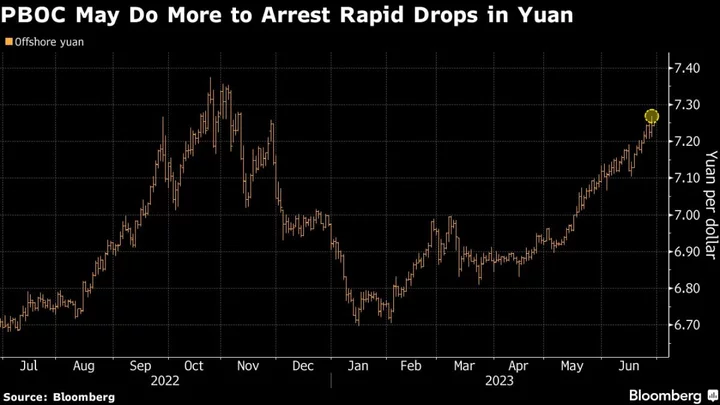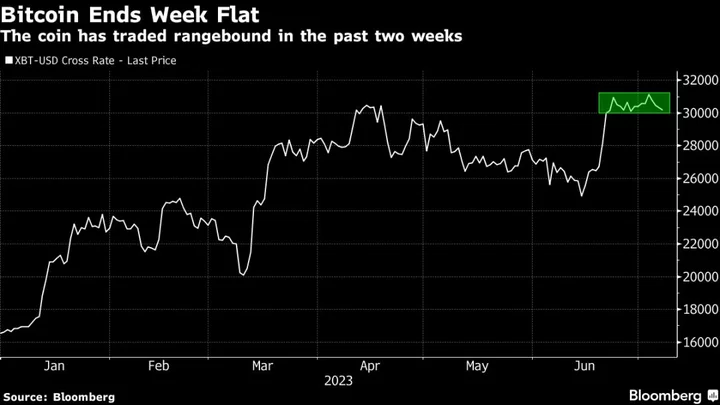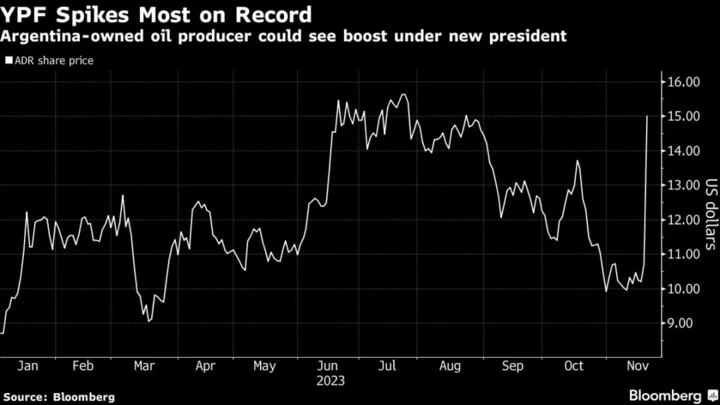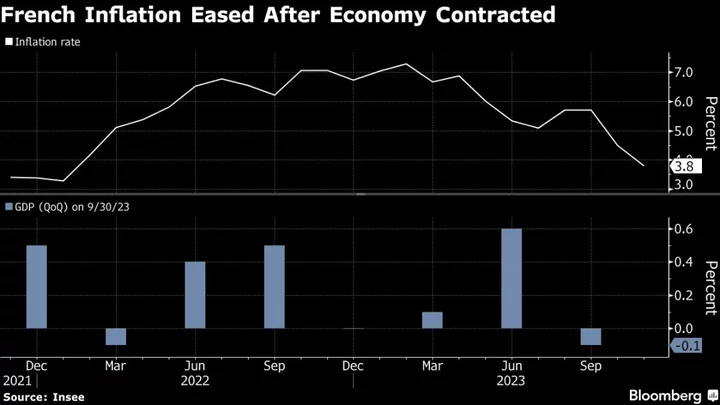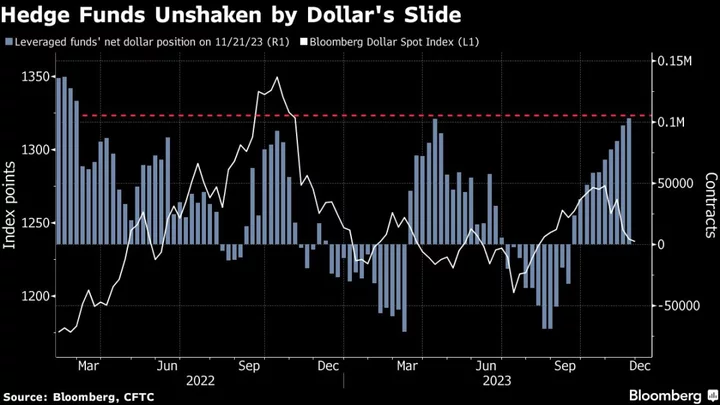China may need to dig deeper into its policy kit to arrest a slide in the yuan, if it is serious about quashing pessimism toward the managed currency.
The People’s Bank of China set a stronger-than-expected reference rate for a third time this week on Thursday, but it failed to prevent the yuan from extending a seven-month low. The currency has come under increasing pressure against the dollar amid mounting evidence the country’s economic recovery will be slower than anticipated and any stimulus modest.
While the so-called currency fixing is a straightforward and cost-free tool for the PBOC to guide expectations, it can lose its punch amid extreme bearish sentiment. If a string of stronger fixes fails to halt the yuan’s rout to Beijing’s satisfaction, it may choose to deploy more aggressive measures such as loosening dollar liquidity and adding capital curbs.
“The PBOC still has tools to use, as it hasn’t resorted to some aggressive tools other than mainly tweaking the fixing,” said He Wei, China economist at research institute Gavekal Dragonomics in Beijing. “It’s possible that the yuan will remain weak for some time as the government is seen unwilling to roll out more stimulus policies.”
The PBOC’s Deputy Governor Pan Gongsheng highlighted the country’s “rich experience” in coping with shocks through “plentiful macro-prudent tools” in remarks earlier this month. Here’s a look at some measures China may deploy to support the yuan:
Yuan Fixing
The easiest way for the central bank to influence the yuan is through its daily reference rate, known as the fixing, which is set at 9:15 a.m. The yuan is then allowed to move 2% in either direction.
A visible gap between the reference rate and market expectations is often interpreted as a sign of preference for the yuan’s levels from the central bank. The PBOC on Thursday set the yuan fixing 311 pips stronger than the average estimate in a Bloomberg survey, the largest premium since November. The fixing-estimate gap hit a record 950 pips last October.
China could also enhance the fixing’s influence in the market by urging banks to trade the yuan at levels closer to the rate at the market open, and so reinforce “the authority of the fixing” as it did last year.
“The chance remains high that the PBOC may follow up with more fixing guidance or other FX policy measures if the yuan weakness gathers pace again in the coming days,” said Jingyang Chen, Asia FX Strategist at HSBC Holdings Plc.
Dollar Sales
While officials have repeatedly said the PBOC has basically exited regular currency intervention to let the market decide the yuan’s exchange rate, traders still tend to watch out for dollar sales by large state-owned banks.
A few of these banks sold dollars this week before 4:30 p.m. local time to create a stronger closing price for the onshore yuan. Such trading also allows the central bank to set a lower dollar-yuan reference the next day.
Increasing FX Liquidity
China could lower the reserve requirement ratio for foreign currency deposits to reduce the amount of foreign exchange that banks need to hold. That would unleash more dollars into the market, relieving the pressure on the yuan.
This tool has been frequently used in the past two years to ease yuan moves. The PBOC raised the ratio twice in 2021 and then reduced it twice last year to 6%. The last cut of 2 percentage points in September added $20 billion of foreign currency on the market.
Speculation Costs
The central bank could impose a punitive fee on speculative trades in the derivatives market, raising the cost of bets to short the yuan.
The last such move was also in September 2022, when the PBOC imposed a risk reserve requirement of 20% on currency forward sales by banks. The monthly volume of foreign-exchange sales via these forward contracts has since plummeted.
Flow Control
Controlling the flow of funds in and out of the country would be one of the bluntest instruments. While authorities are unlikely to change a long-standing annual quota for foreign-exchange purchases of $50,000 per person, they could broaden channels for foreign investors to buy onshore assets.
Another option would be to loosen rules on getting funding. Last year, the PBOC allowed onshore companies to borrow more overseas, increasing foreign capital inflows.
--With assistance from Betty Hou and Iris Ouyang.

